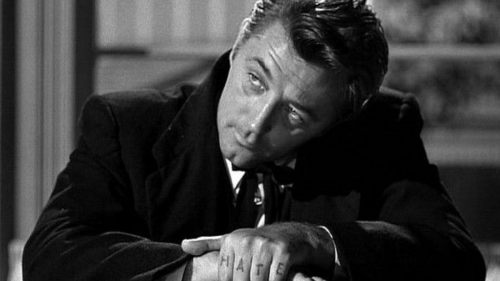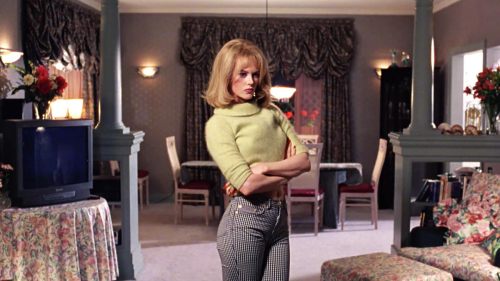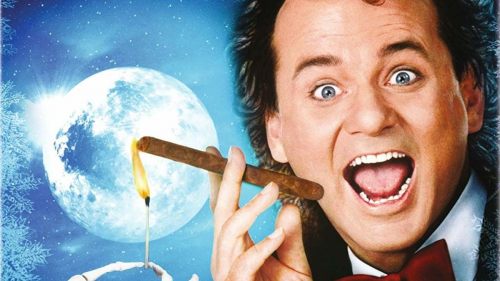Cover to Credits: FLOWERS IN THE ATTIC
"The book was better" is a phrase heard often in conversations about book-to-film adaptations. "Don't judge a book by its movie" is another common jab. While we've all uttered some version of this sentiment at one point or another, there have been those rare occasions when the opposite is true. As a lifelong bookworm and cinephile, I've discovered that whether I read the book before or after seeing the movie can have a profound influence on my enjoyment of the story across both mediums. In this column, I’ll be checking out old and new adaptations to further explore both sides of that experience. In the process, I hope to unveil how these two vastly different mediums work together to tell the same story, from cover to credits.
---
“We were another of the unpleasant subjects that people don’t like to talk about, like mice in the attic.”
- V.C. Andrews, Flowers in the Attic
I couldn’t have been much older than twelve when I borrowed Flowers in the Attic from my older sister. Hiding it under the bed like porn, I’d read it in secret late at night, absorbed in the unsettling yet thrilling tale of children in peril, negligent mothers, tyrannical grandparents, and, most taboo of all: consensual incest. Back then, reading the novels of V.C. Andrews made me feel mature and sophisticated – feelings a girl of that age covets with every fiber of her being. Andrews had a talent for weaving familiar fairy tale tropes of evil witches and damsels in distress into her gothic horrors, conjuring terrifying glimpses into the darkest sides of humanity. Her books were like Harlequin for teenage girls, passed down discreetly from older sisters or friends at school with whispers of the forbidden deeds inside. Enticing us from the shelves with haunted faces peering out through the keyhole (or “stepback”) covers, opening to ominous illustrations of the characters we’d soon meet on the pages. The works of V.C. Andrews awakened a taste for shocking and illicit content and confirmed that telling a teenage girl she’s too young for something is the quickest way to get her undivided attention.

Although Virginia C. Andrews (born Cleo Virginia Andrews) died of breast cancer in 1986 – having completed only eight of the numerous novels bearing her name – her legacy continues thanks to ghostwriter Andrew Neiderman (The Devil’s Advocate). By the time of her death, Andrews had sold more than twenty-four million copies of her books, leaving behind several unfinished manuscripts and outlines that Neiderman was hired by her estate to complete. While the ghostwriter’s identity was kept secret for many years, today he writes novels openly in the style of V.C. Andrews, adding to her bibliography of more than twenty bestselling series. Maintaining the format Andrews launched, each series dives deep into a tangled web of family secrets, exploring themes of greed, abuse, incest, and various other nightmares. But the horrors began with the Dollanganger children, locked away and left to die in their evil grandmother’s attic.

Published in 1979, Flowers in the Attic was the first of five books in the classic Dollanganger saga. The story follows widow, Corrine, and her four towheaded children, Christopher, Cathy, Cory, and Carrie, forced to return to her parents’ stately mansion after the unexpected loss of her husband. Once there, Corrine is on a mission to win back the love of her dying father and reclaim her inheritance. The catch being that should anyone discover she bore children during her blasphemous marriage to her half-uncle then she gets nothing. Conspiring with their fanatically religious and coldhearted grandmother, Corrine locks the children away, visiting them less and less as the grandmother provides them food and a list of impossible rules to follow. For more than three years, they are left to rot in an abandoned wing of the mansion beneath the attic – their only playground – waiting for their mother’s promise to be fulfilled. Held prisoner under the “witch-grandmother’s” ever watchful and sin-obsessed gaze, the children never suspect, until it’s too late, that their mother’s plan is to slowly kill them all.

In 1987, a screenplay was adapted by Wes Craven, who was slated to direct until his script was rejected due to graphic violence and concerns of an R-rating. Funny, considering those who had read the novel were surely expecting nothing less. The adaptation eventually went to writer/director Jeffrey Bloom, and is, at best, a truncated version missing quite a few pages from the source. But, say what you will about the film, it does get the atmosphere right. The grand estate used as the grandmother’s house, Foxworth Hall, sits on over 165 acres of land in Ipswich, Massachusetts and looks like a haunted castle. A place you wouldn’t be at all surprised to look up and catch sight of ghostly faces staring from behind the heavily curtained windows of an abandoned wing.

Most would agree that Louise Fletcher stands out as the riveting and ruthless grandmother, lording her fanatical beliefs over powerless children she thinks of as the devil’s spawn. She scared the hell out of me when I was a kid, and still does! The grandmother has no qualms picking up little Carrie (Lindsay Parker) by her hair or smacking Cory (Ben Ganger) so hard he flies across the room. Granted, her mistreatment of Cathy (Kristy Swanson) is more brutal in the book, but the constant threat of her presence instills you with dread. Victoria Tennant’s performance as Corrine hits you unexpectedly. Her selfishness and greed are played with such subtlety, it’s impossible to know when she first decides to sprinkle arsenic on her children’s food. Clare Peck’s steady voiceover as an older Cathy narrating her memory of the past is beautifully complemented by Christopher Young’s eerie and ambient orchestral score. While I can understand and even agree with criticism of this adaptation’s avoidance of the incestuous relationship between Cathy and Chris (Jeb Stuart Adams), through the pacing, the melodrama, and the campy ending, the tone remains the most faithful we’ve seen to date to Andrews’ haunting family saga.

When you see threads of V.C. Andrews’ influence coursing through the likes of Sofia Coppola’s Lick the Star and, more recently, HBO’s Sharp Objects, it’s frustrating to think we’re still waiting for a faithful representation of her work. Sure, the Lifetime network is doling out their versions of Flowers in the Attic and the upcoming Heaven series, packed with more melodrama and camp than the film ever dreamed, but these stories deserve better.
V.C. Andrews never shied away from those unpleasant topics people don’t discuss at dinner parties. While her books often dealt with themes of hiding your most shameful secrets away, she was fearless when it came down to confronting the devil inside. As for Flowers in the Attic, the appeal was quite simply that it mirrored the restrictive feeling of what it was like to be young. Reducing or censoring the content of an adaptation to protect the innocent is an insult to their intelligence. You can’t shock a V.C. Andrews fan, they’ve already read the books. While I’ll always point you to the books first, which should keep you entertained for quite a while, this is the movie I’ll continue to recommend, until something better comes along.



